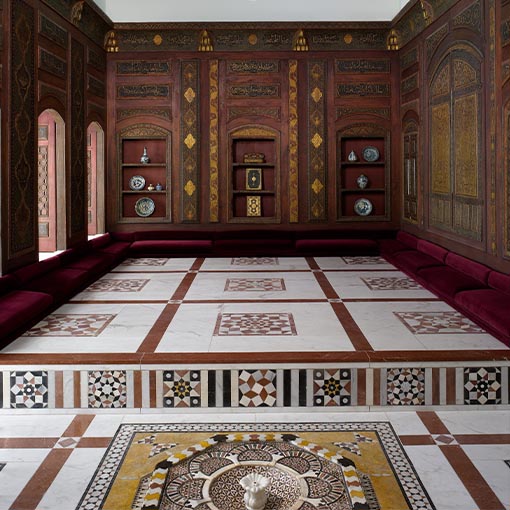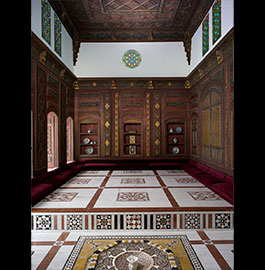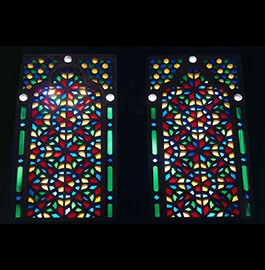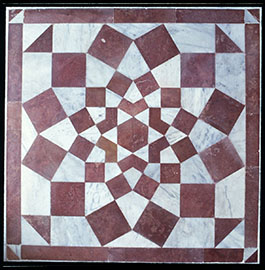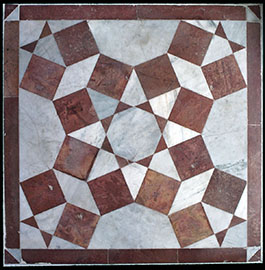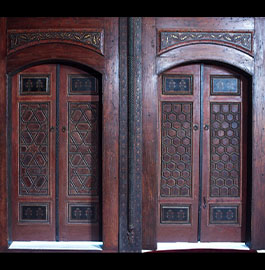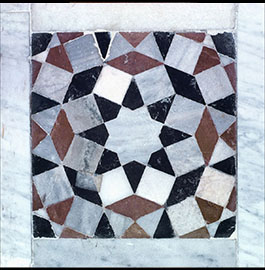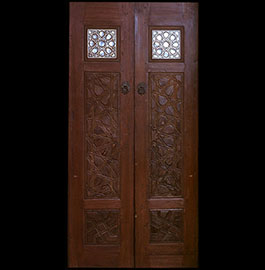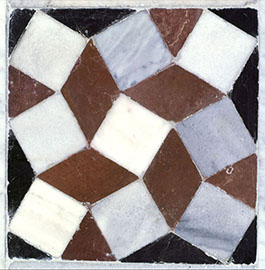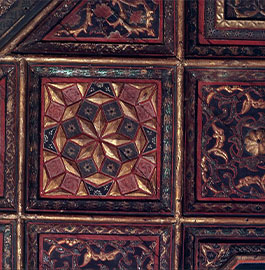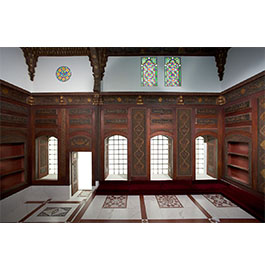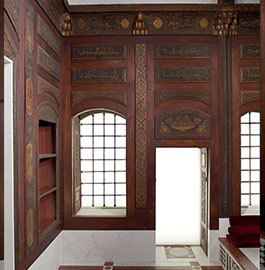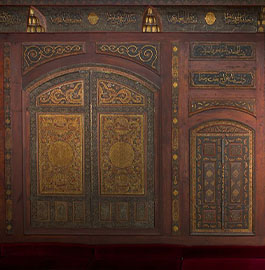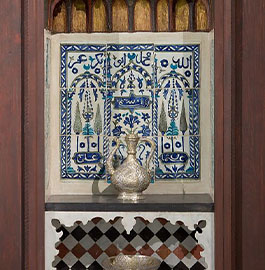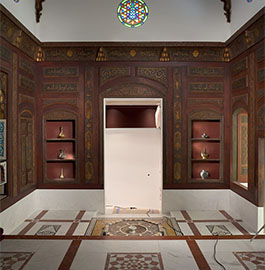The Damascus Room
The Metropolitan Museum of Art, New York
The Damascus Room, a splendid residential winter reception chamber (qa’a), exemplifies the late Ottoman era’s architectural elegance in Damascus, Syria. As one of the earliest preserved and nearly intact interiors of its kind, this room’s grand scale and intricate embellishments hint at its origin within the dwelling of a prominent and prosperous family. The verses of poetry adorning its walls suggest that the benefactor was a Muslim, possibly a member of the religious elite tracing their lineage back to Prophet Muhammad.
Typical of the qa’as of its era, the Damascus Room is divided into two distinct sections: a raised, square seating area (tazar) and a small antechamber (‘ataba) accessible through a doorway leading from a courtyard. The present entrance, through which visitors now admire the room, would have originally been a wall concealing a cupboard. (The cupboard doors are presently displayed in the passageway leading to the room.)
Wealthy homeowners in Damascus periodically refreshed their reception rooms in accordance with ever-evolving interior design trends and preferences. Consequently, residences in the old city of Damascus, including their interiors, seldom stem from a single construction phase. While the inscription primarily dates most of the room’s wooden elements to the year 1707 AD, modifications and alterations have been introduced to the room over the following three centuries.
The wooden relief decorations feature a combination of gesso adorned with gold leaf, tin leaf complemented by tinted glazes, and vivid egg tempera paint. This distinctive Ottoman-Syrian technique and style, known as ‘ajami, bestow a lavish texture with diverse surfaces that react dynamically to changes in lighting.
The ‘ajami decoration’s original palette was significantly more vibrant and varied than what we perceive today. Periodically, these surfaces were coated with varnish to ensure maintenance. Over the passage of time, successive varnish layers have darkened, toning down the room’s once-colorful surfaces.
The Damascus Room boasts a poetic display with forty stanzas, reflecting the eloquence and artistic sensibilities of its patrons.

